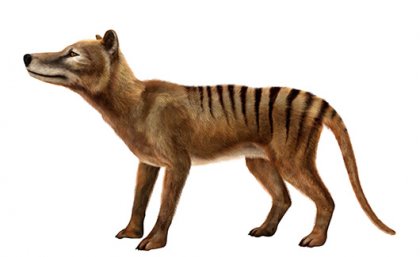
A University of Queensland study has found that, though they looked like wolves, the extinct Tasmanian tiger – or thylacine – had brain cells like other carnivorous marsupials.
Dr Rodrigo Suarez, from UQ’s School of Biomedical Science and the Queensland Brain Institute, said the findings show that the internal structure of the brain is a better indicator of evolutionary relatedness between species than external appearances.
“We analysed high-resolution microscope slides of a brain taken from a thylacine after its death at the Berlin Zoo in Germany in the late 19th century,” Dr Suarez said.
“We compared the slides with the brains of 34 species of mammals including monotremes like echidnas and platypus, marsupials like kangaroos and quolls, and placentals like mice and humans.”
Dr Suarez said that the cellular organisation of the thylacine forebrain is similar to that of other carnivorous marsupials.
“We also saw that the thylacine’s cortical folding – which gives the brain its wrinkled appearance – is bigger than in their related marsupials but much smaller than in canids such as foxes and wolves,” he said.
“The study showed that thylacine brains had enlarged olfactory and higher-order cognitive areas than other carnivorous marsupials, giving the species an increased sense of smell for its scavenging and hunting lifestyle.”
The Tasmanian tiger was Australia’s largest carnivorous marsupial before its extinction in the early–mid 20th century mainly due to hunting by European settlers.
Dr Suarez said that the findings demonstrate that brains and bodies can change in different ways throughout evolution.
“Brain adaptations made thylacines distinct from other carnivorous marsupials,” he said.
“This research gives us a clearer picture of the nature of a long-gone species and provides benchmarks to both better understand other extinct and vulnerable marsupials and assess the future success of de-extinction efforts.”
This study is part of ongoing research by Dr Suarez and his group on carnivorous marsupials, which is providing new insights on how the mammalian brain developed and evolved.
This research is published in the journal Proceedings of the National Academy of Sciences of the USA.
Media: Dr Rodrigo Suarez, r.suarez@uq.edu.au; UQ Medicine Communications, med.media@uq.edu.au, +61 436 368 746.
.jpg)










